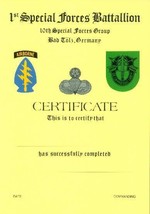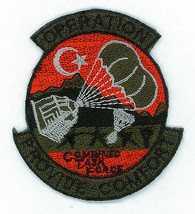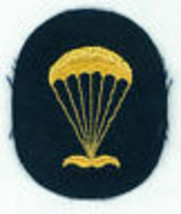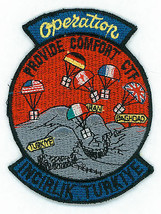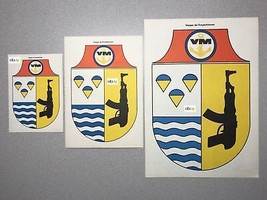U.S. Army, Mexican War, Campaign Streamer, and 50 similar items
U.S. ARMY, MEXICAN WAR, CAMPAIGN STREAMER, MOLINO DEL RAY, 1847
$20.00
View full item details »
Shipping options
Seller handling time is 1 business day Details
$4.35 to United States
Return policy
Full refund available within 30 days
Details
Purchase protection
Payment options
PayPal accepted
PayPal Credit accepted
Venmo accepted
PayPal, MasterCard, Visa, Discover, and American Express accepted
Maestro accepted
Amazon Pay accepted
Nuvei accepted
View full item details »
Shipping options
Seller handling time is 1 business day Details
$4.35 to United States
Return policy
Full refund available within 30 days
Details
Purchase protection
Payment options
PayPal accepted
PayPal Credit accepted
Venmo accepted
PayPal, MasterCard, Visa, Discover, and American Express accepted
Maestro accepted
Amazon Pay accepted
Nuvei accepted
Item traits
| Category: | |
|---|---|
| Quantity Available: |
Only one in stock, order soon |
| Condition: |
New |
| Country/Region of Manufacture: |
United States |
| Theme: |
Militaria |
| Type: |
Campaign Streamer |
Listing details
| Seller policies: | |
|---|---|
| Shipping discount: |
No combined shipping offered |
| Posted for sale: |
May 1 |
| Item number: |
1743629976 |
Item description
U.S. ARMY, MEXICAN WAR, CAMPAIGN STREAMER, MOLINO DEL RAY, 1847
The Army adorns its flag with a separate Streamer for each important action in all wars in which it participated. The Army currently allows 190 Streamers. This Campaign Streamer is regulation size at 2-3/4 inch x 4 feet long. This Streamer has a grommet at the hoist end (left side) to protect the material and provide a device to attach the Streamer to the ring holder and then to the top of the flagpole which is held in place by the top ornament (spear, eagle, etc)
Molino del Ray, 8 September 1847
On 8 September 1847, the Americans launched an assault on Molino del Rey, the most important outwork of Chapultepec. It was taken after a bloody fight, in which the Mexicans suffered an estimated 2,000 casualties and lost 700 as prisoners, while perhaps as many as 2,000 deserted. The small American force had sustained comparatively serious losses-124 killed and 582 wounded-but they doggedly continued their attack on Chapultepec, which finally fell on 13 September 1847.American losses were 138 killed and 673 wounded during the siege of the fortress. Mexican losses in killed, wounded, and captured totaled about 1,800. The fall of the citadel brought Mexican resistance practically to an end. Authorities in Mexico City sent out a white flag on 14 September 1847. Santa Anna abdicated the Presidency, and the last remnant of his army, about 1,500 volunteers, was completely defeated a few days later while attempting to capture an American supply train.
On 2 February 1848, the Treaty of Guadalupe Hidalgo was signed, ratified in the U.S. Senate on 10 March 1848, by the Mexican Congress in May, and on 1 August 1848 the last American soldier, departed for home.
The campaign streamers attached to the Army Flag staff denote campaigns fought by the Army throughout our nation?s history. Each streamer (2 inches wide and 4 feet long) is embroidered with the designation of a campaign and the year(s) in which it occurred. The colors derive from the campaign ribbon authorized for service in that particular war.
The concept of campaign streamers came to prominence in the Civil War when Army organizations embroidered the names of battles on their organizational colors. This was discontinued in 1890, when units were authorized to place silver bands, engraved with the names of battles, around the staffs of their organizational colors. When AEF units in World War I were unable to obtain silver bands, General Pershing authorized the use of small ribbons bearing the names of the World War I operations. In 1921 all color-bearing Army organizations were authorized to use the large campaign streamers currently displayed.
"The Army Flag and Its Streamers" was originally prepared in August 1964 by the Office of the Chief of Military History, in cooperation with the Office of the Chief of Information, and the U.S. Army Exhibit Unit, to provide general summaries of each of the campaigns displayed on the Army flag. It was subsequently updated by the Center of Military History to add the campaigns from Vietnam. This study covered named campaigns only and did not include the campaigns that were sometimes awarded to individual units for war service in engagements outside the limitations of the named campaigns (i.e., Virginia 1863). It only addressed those campaigns authorized for display on the Army flag.
|
Why are we showing these items?
Booth
BlueGrass Militaria |
|

-
Refine your browsing experience
We can show you more items that are exactly like the original item, or we can show you items that are similar in spirit. By default we show you a mix.
This item has been added to your cart
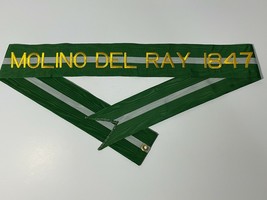 U.S. ARMY, MEXICAN WAR, CAMPAIGN STREAMER, MOLINO DEL RAY, 1847 added to cart.
Only one available in stock
U.S. ARMY, MEXICAN WAR, CAMPAIGN STREAMER, MOLINO DEL RAY, 1847 added to cart.
Only one available in stock
View Cart or continue shopping.
 Please wait while we finish adding this item to your cart.
Please wait while we finish adding this item to your cart.
Get an item reminder
We'll email you a link to your item now and follow up with a single reminder (if you'd like one). That's it! No spam, no hassle.
Already have an account?
Log in and add this item to your wish list.








